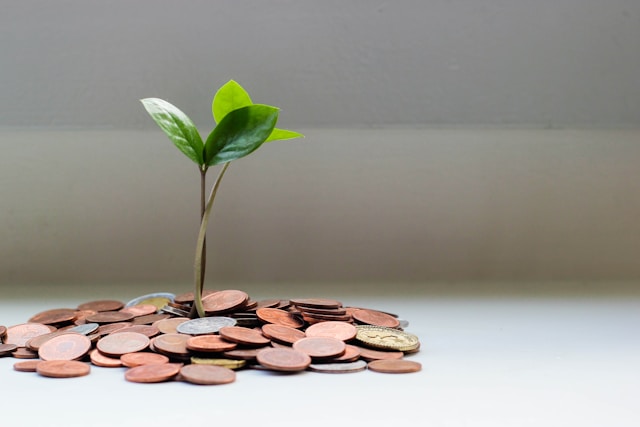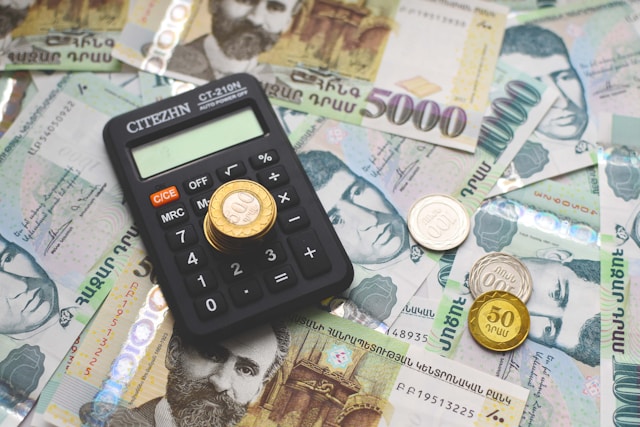Inflation has redefined how we view spending, saving, and investing. For millions of individuals and families, adjusting to higher prices is no longer optional—it’s a financial necessity. In this comprehensive guide, we explore how to thrive in this new era by adopting resilient personal finance strategies that can weather economic turbulence and secure long-term stability.
Understanding Inflation: What It Means for Your Wallet
Inflation, the steady rise in the price of goods and services over time, eats away at purchasing power. For the average person, this means everyday items—like groceries, fuel, and utilities—cost more. As prices climb, the same salary buys less, making it critical to rethink your personal finance priorities.
Many people assume inflation is temporary, but recent global trends suggest it may be a prolonged phase. Central banks raise interest rates to combat it, but that makes loans and mortgages more expensive. Consequently, a solid grasp of how inflation works and how it impacts your financial life is the first step in developing a smarter financial plan.
In an inflationary environment, it’s not enough to simply earn money—you must also protect and grow it. Whether you’re a salaried employee, freelancer, or business owner, staying ahead of inflation starts with understanding how it influences every aspect of personal finance—from budgeting to investing.
Budgeting in an Inflationary Economy: Precision Is Power
When prices rise unpredictably, traditional budgeting methods may not suffice. A dynamic, flexible approach is necessary to adapt to rapidly changing economic conditions. One key principle is to track every expense in real-time. This gives you a clear picture of where your money goes and helps you identify where to cut back without sacrificing essential needs.
Start with the 50/30/20 rule: 50% of your income should go to necessities, 30% to wants, and 20% to savings or debt repayment. However, in an inflationary period, you may need to tweak this model. For example, cutting discretionary spending to 20% and boosting savings to 30% can offer more financial security.
Many digital tools and mobile apps can help you stick to your revised budget. Apps like Mint, YNAB (You Need A Budget), and PocketGuard allow you to sync accounts, set spending limits, and get real-time alerts. Budgeting is the cornerstone of personal finance in tough times, and leveraging technology can make this task more efficient and insightful.
Prioritizing Emergency Funds: Preparing for the Unexpected
One of the key lessons from recent years is the value of an emergency fund. Inflation makes this even more important. If your monthly expenses are increasing, your emergency fund should also increase proportionally. Ideally, aim for three to six months’ worth of living expenses.
An emergency fund shields you from relying on high-interest credit in times of crisis—like job loss, medical emergencies, or unexpected repairs. This becomes especially important when inflation affects employment rates and cost-of-living adjustments lag behind.
Store your emergency savings in a high-yield savings account or a money market fund. These offer better interest rates than traditional accounts, helping your money grow slightly even while it waits to be used. Sound personal finance management isn’t just about growth—it’s also about risk management and preparedness.
Smarter Spending: How to Beat Price Hikes
In an inflationary period, being intentional with your spending is more crucial than ever. Price comparison, discount tracking, and loyalty rewards programs should become part of your daily routine. Avoid brand loyalty for non-essential items and become a savvy shopper instead.
One tactic is to buy in bulk for non-perishable goods. While this might require a larger upfront cost, it often results in long-term savings. You can also explore generic or store-brand products that offer the same quality at a lower price. This small shift in behavior can drastically improve your monthly budget.
Moreover, consider joining warehouse clubs like Costco or Sam’s Club, which often provide significant savings on household goods. Coupon apps and browser extensions like Honey or Rakuten can further reduce your bills. Being smart with your money is a cornerstone of sustainable personal finance practices.
Debt Management: Taming the Interest Beast
Inflation impacts not only the prices of goods but also the interest rates tied to your debt. As central banks hike rates to combat inflation, your credit cards, loans, and variable-rate mortgages can become significantly more expensive. Therefore, reducing high-interest debt should be a priority.
Start by identifying your most expensive debts. These typically include credit cards and payday loans. Use the snowball method (pay off the smallest debts first) or the avalanche method (tackle the highest interest rates first), depending on what motivates you more.
Debt consolidation is another option worth considering. A personal loan with a lower fixed interest rate can help you pay off high-interest debt faster. Lowering your debt burden strengthens your overall personal finance position and improves your credit score—opening the door to better financial opportunities.
Investing During Inflation: Preserving and Growing Wealth

Inflation can erode the real value of your investments, especially if your portfolio is too conservative. Holding too much cash or investing solely in low-yield bonds may actually lead to a loss in purchasing power. That’s why inflation-proofing your investment strategy is crucial.
Historically, assets like real estate, commodities, and certain stocks (like those in the energy or consumer staples sectors) have performed well during inflationary periods. Treasury Inflation-Protected Securities (TIPS) are government bonds specifically designed to protect against inflation.
Diversification remains the golden rule. A mix of stocks, bonds, and alternative investments can offer the balance you need. Consult a certified financial planner to ensure your investment plan aligns with current market realities and your long-term goals. Long-term personal finance growth depends on smart, diversified investing.
Passive Income: Building Streams Beyond Your Salary
One of the best hedges against inflation is to develop multiple streams of income. Relying on a single salary is risky, especially when the cost of living rises faster than your paycheck. Generating passive income allows you to supplement your budget and reach financial goals faster.
Popular passive income sources include dividend-paying stocks, peer-to-peer lending, affiliate marketing, renting out property, or selling digital products like eBooks and courses. Each comes with its own set of risks and rewards, so research thoroughly before diving in.
Creating passive income is a long game. It requires upfront effort but can pay off in the long term by offering financial security and flexibility. In the realm of personal finance, passive income is not a luxury—it’s a strategy.
Re-Evaluating Financial Goals: Stay Agile, Stay Focused
Economic upheaval demands a reassessment of your financial goals. Maybe you were saving for a luxury vacation or a new car—but now it may be wiser to redirect that money toward paying off debt or increasing your emergency fund. Flexibility is key.
Set short-term and long-term goals that are realistic and measurable. Use SMART (Specific, Measurable, Achievable, Relevant, Time-bound) criteria to stay focused. For example, instead of saying, “I want to save more,” say, “I will save $500 each month for the next 12 months for a house down payment.”
Frequent reviews help you track your progress and adapt to changing circumstances. Whether your goals are wealth-building or simply making ends meet, being intentional about them is a vital component of effective personal finance planning.
Financial Literacy: Your Strongest Inflation Shield
Knowledge is power, especially when navigating uncertain times. Improving your financial literacy helps you make better decisions, avoid scams, and take advantage of opportunities. You don’t need to become an economist—but understanding the basics can significantly enhance your financial confidence.
There are countless free resources available online, including blogs, podcasts, YouTube channels, and webinars. Topics like investing, budgeting, taxes, and credit management are essential areas to master. Make a habit of learning something new about personal finance each week.
If you’re overwhelmed, consider joining a financial literacy course or working with a certified financial advisor. Investing in your education is investing in your future—and no one can take that away from you.
Community and Accountability: Strength in Numbers
Managing money can be isolating, but it doesn’t have to be. Join communities—online forums, local groups, or even group chats with friends—where you can share tips, strategies, and motivation. Learning from others’ successes and mistakes makes your financial journey easier.
Accountability partners are also helpful. Whether it’s a spouse, friend, or mentor, sharing your goals with someone you trust can keep you motivated and disciplined. You’re more likely to stick to a budget or savings plan when someone else is rooting for you.
Building a network of like-minded individuals adds an emotional and educational layer to your personal finance strategy. Don’t underestimate the power of support—it may be the thing that gets you through the toughest financial periods.
Your Roadmap to Financial Resilience
Inflation may be the “new normal,” but financial stress doesn’t have to be. By adjusting your habits, strengthening your financial foundation, and staying informed, you can not only survive but thrive in this economic climate.
Smart personal finance is about more than just money—it’s about security, opportunity, and peace of mind. Whether you’re starting from scratch or refining an existing plan, remember: consistency, education, and adaptability are your greatest tools.

